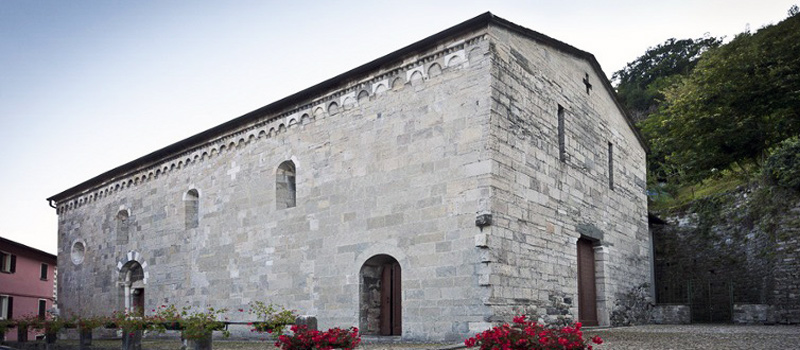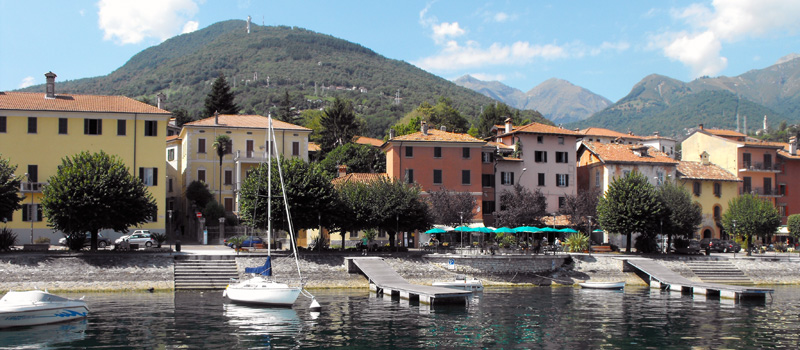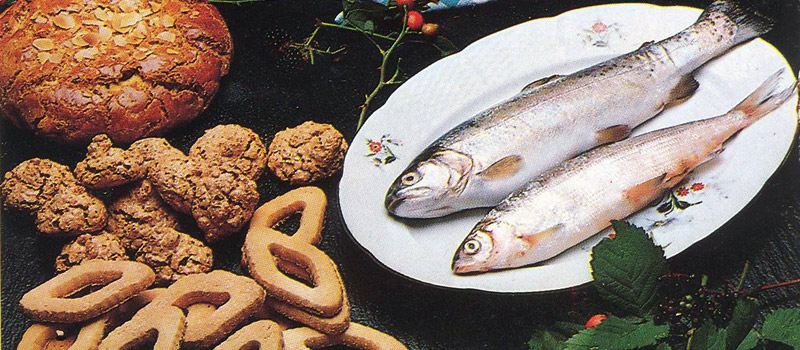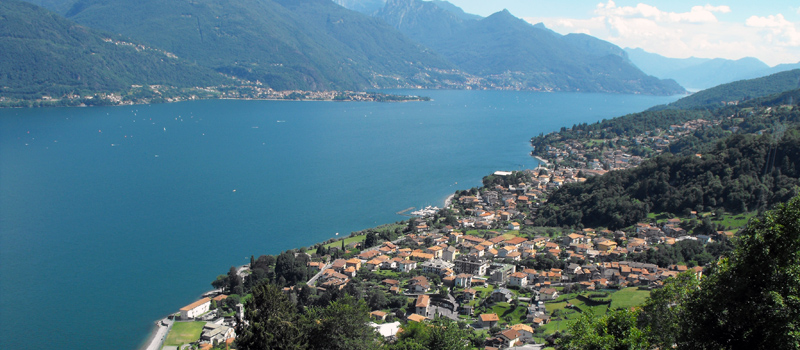
The Saint Maria Church is a single-nave with semi-circular apse; the description of Bishop Ninguarda (1593) reveals the antique presence of a narthex. The origin of the St. Maria Church of Martinico debuted between the 11th and 12th centuries.
The western part, the side portal and that of the façade are the fruit of later interventions. In the northern side opens the beautiful Romanesque portal from the 12th century, in which the architrave is supported by pilasters surmounted by bas-reliefs in the form of human heads. Conserved inside the church is a gold and silver processional cross by F. Ser Gregori, which dates back to the 16th century.
The apse and the lateral walls are adorned with hanging arches and by stones in a saw-tooth pattern: the corbels of the arches display anthropomorphous and zoomorphous symbols. The bell tower, reconstructed during restorations, is slightly isolated from the church and is characterised by a decoration of arches in groups of four, and by opening millioned windows in the bell naos.
Inside the Church of St. Maria of Martinico traces of frescoes realised in two different moments during the 14th century can be admired. The portrayal of the Madonna della Misericordia (Mercy) on the right wall dates back to the more ancient phase (1310-1315). A second small cycle of frescoes, from the 1300s, is found on the right wall along the counter façade.
It is a series of Saints, damaged in part by vaults constructed after the frescoes, and eliminated during restoration work during 1910-1912. The prophet on the right pilaster of the presbiterial arch, together with other intrados fragments, date back to the second half of the 15th century.

Garavedona is an important commercial and a summer vacation centre. Among the buildings stands out that which once belonged to the Cardinal Tolomeo Gallio, called the palace of the four towers, designed by Pellegrini in 1500s.
Gravedona
Dried Shad (Agone), called Missoltini or Missultin, were at one time a precious food for inhabitants of Lake Como, the particular processing allowed them to be conserved for more than a year, excellent traditional Lake Como cuisine.
Lario Cuisine
Musso is a town rich with history: in the thirteenth century the area was the feud of Malacrida family, allies to the Duchy of Milan. In 1522, Gian Giacomo Medici, called the Medeghino, stormed the castle and enlarged the fortifications.
Musso